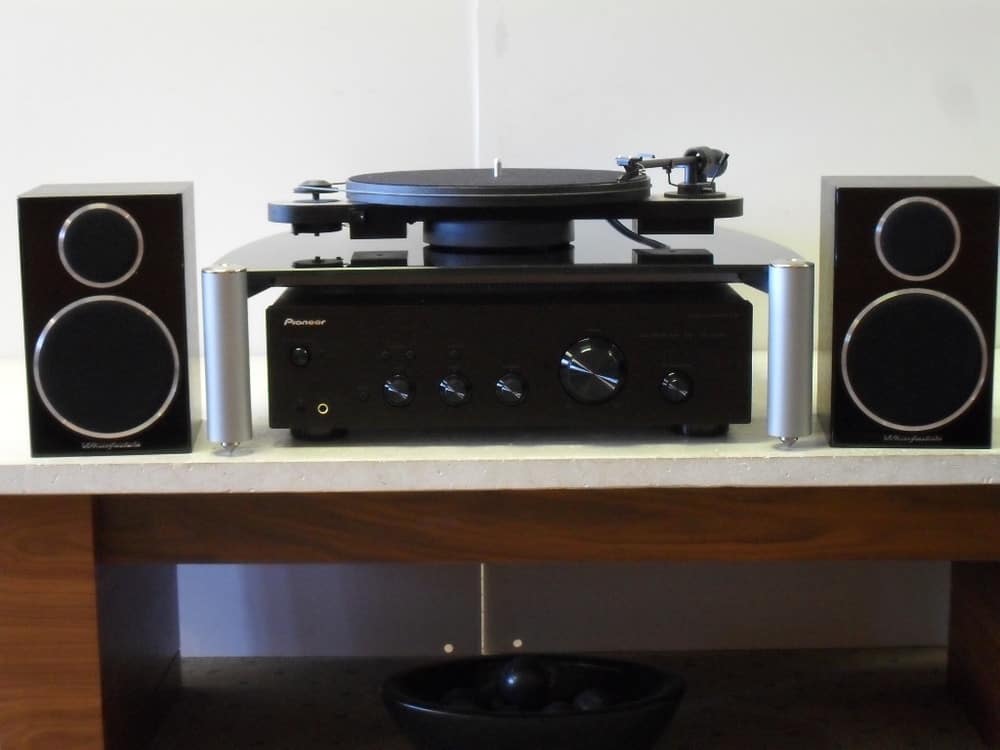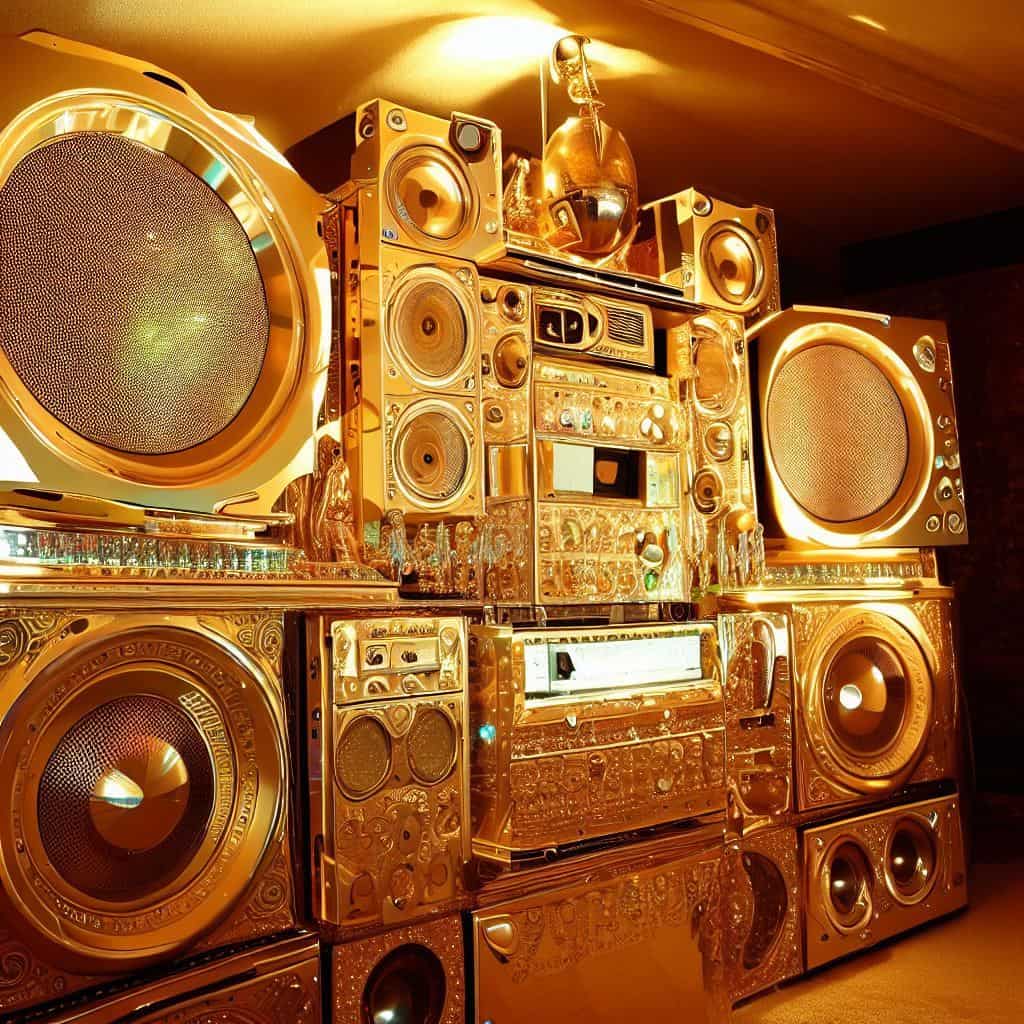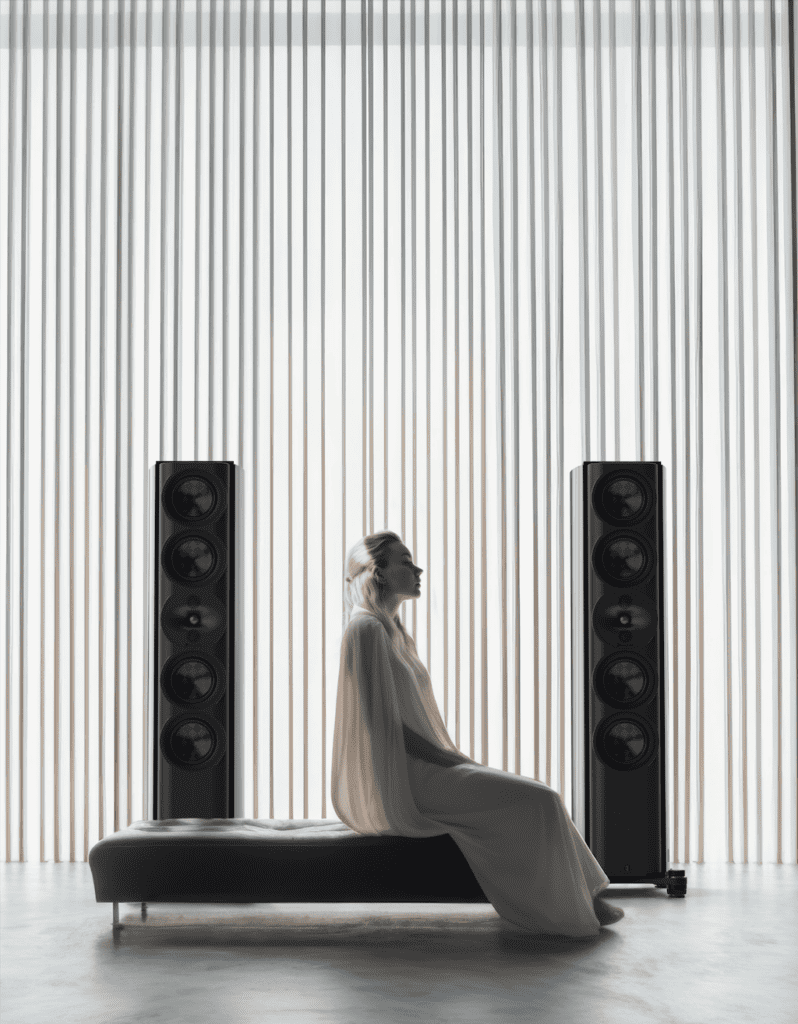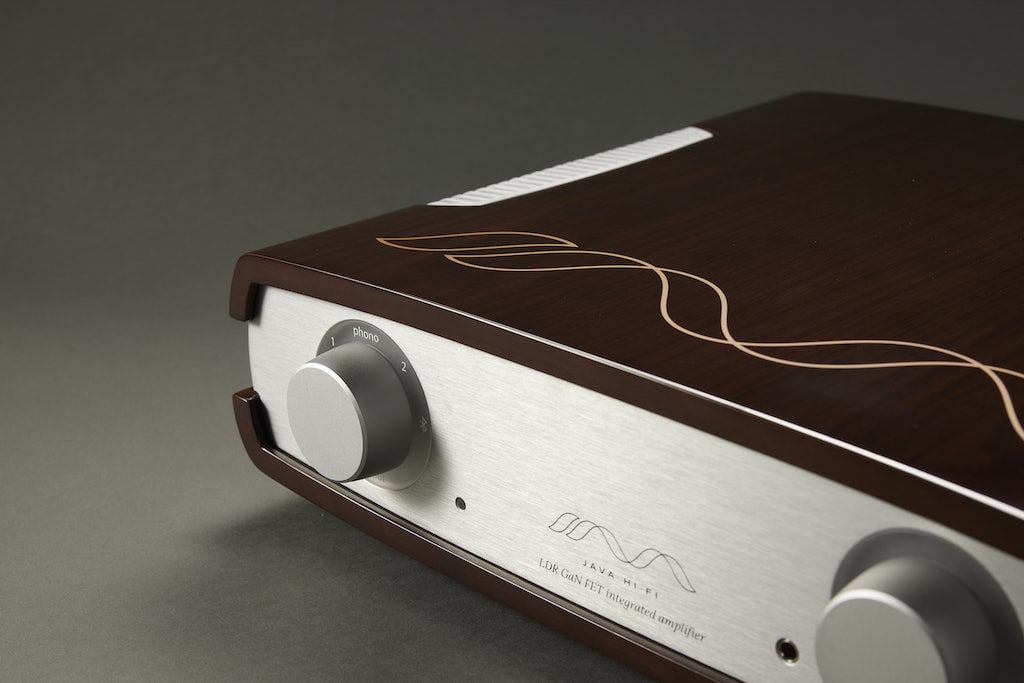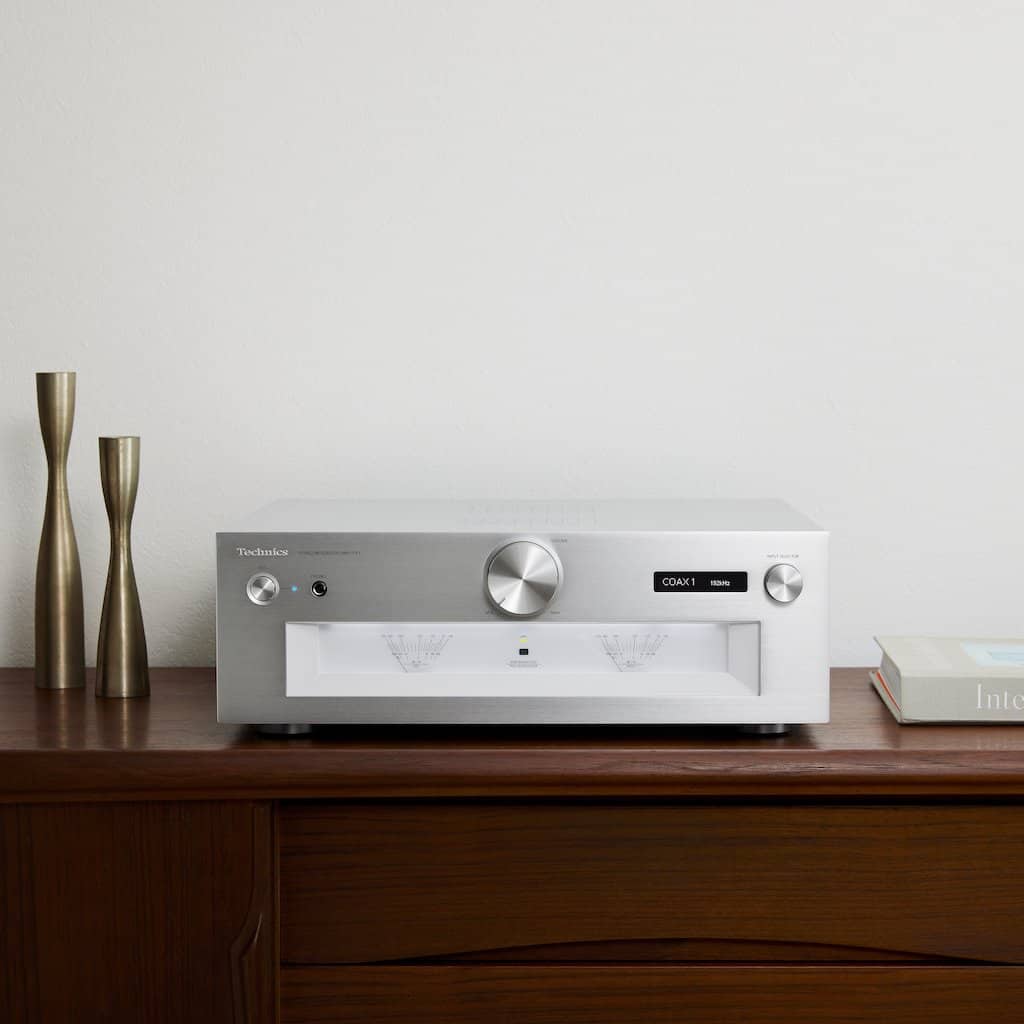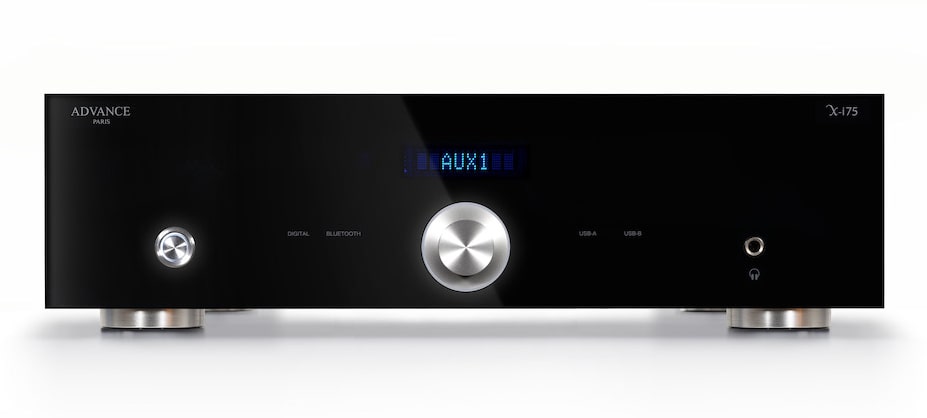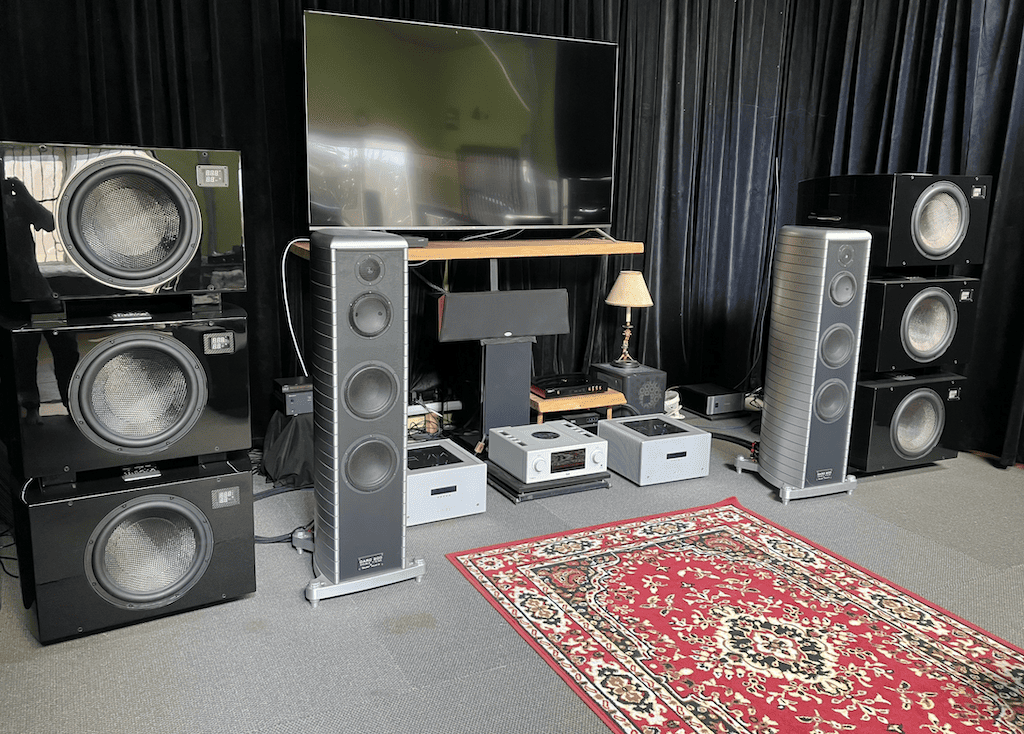So, you’ve heard and loved the sound of a real stereo system but buying and setting one up for yourself is just too-hard basket? GARY STEEL goes back to basics.
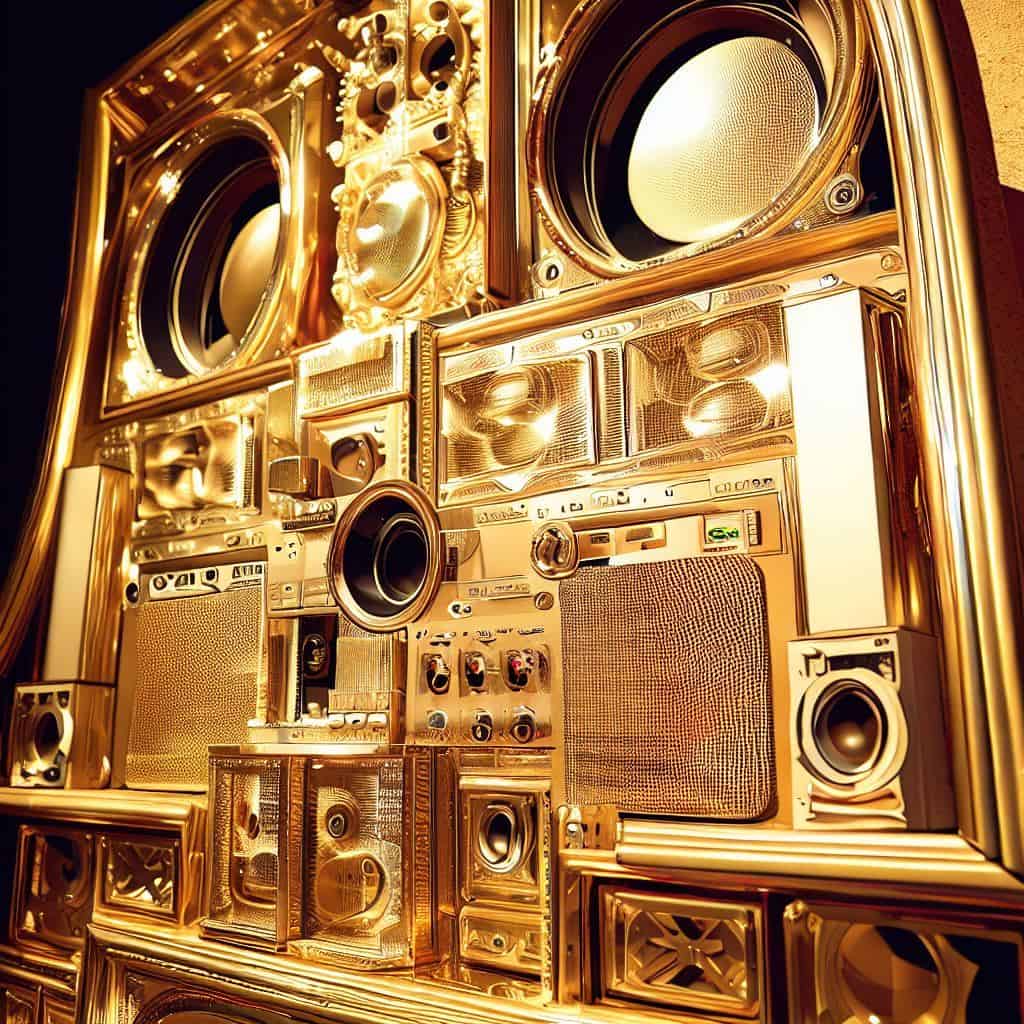
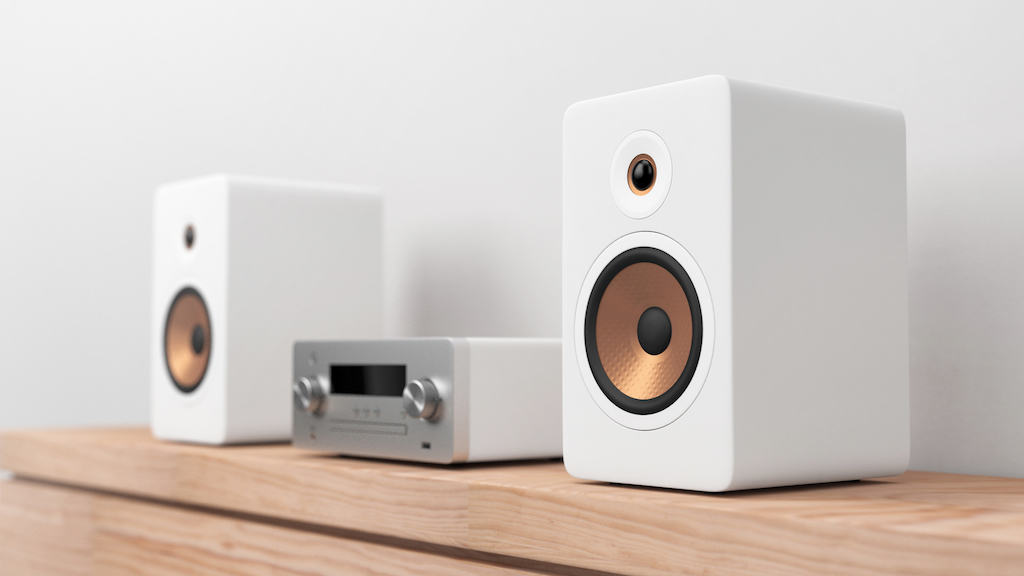
If you’ve ever heard a real hi-fi system then you’ll know that there’s a vast difference between a genuine full frequency stereo setup and the sonically compromised, if convenient, Bluetooth speakers and multi-room systems common in today’s household environments. It’s become all about convenience, and there’s a huge price to pay in deterioration of quality and ultimately, experiential appreciation of music.
While portable Bluetooth speakers and multi-room speaker systems serve a function, what they provide is a pleasant background, a carbon copy facsimile of real music, and not a true deep listening experience.
There’s a myriad of ways to get music in your home in 2023, and many new generation hi-fi components incorporate computer tech. These technologies allow for more options but it’s easy to get lost in the details.
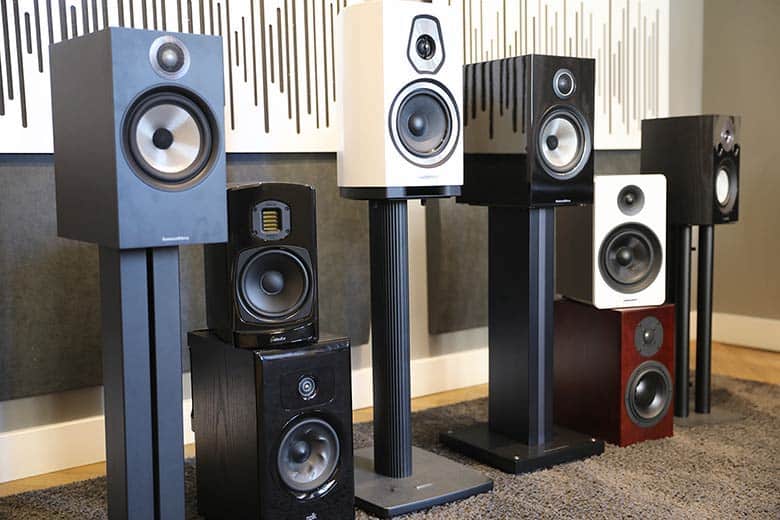
So, let’s get back to basics. If you’re brand new to the world of hi-fi and want to buy and set up your first stereo system, then it might pay to concentrate on the things that really matter. It took me MANY YEARS to get some of these really rather simple facts through my thick head, and I’d like to pass on these hard-won facts so that you can start enjoying great two-channel hi-fi straight away.
Note for all those hi-fi buffs who are technically inclined and think they know everything about hi-fi, and probably do: THIS PIECE ISN’T FOR YOU!
Would you like to support our mission to bring intelligence, insight and great writing to entertainment journalism? Help to pay for the coffee that keeps our brains working and fingers typing just for you. Witchdoctor, entertainment for grownups. Riveting writing on music, tech, hi-fi, music, film, TV and other cool stuff. Your one-off (or monthly) $5 or $10 donation will support Witchdoctor.co.nz. and help us keep producing quality content. It’s really easy to donate, just click the ‘Become a supporter’ button below.
If you’re at all like me, you LOVE music and the only reason you want to explore the world of hi-fi is that you want to go deeper into the music you love. A properly set-up system will allow you to do this, but be aware: a poorly set-up system can have the opposite effect. I’ve heard some rather expensive systems over the years that sound like crap because either they were set up in a bad acoustic environment or the system components didn’t gel together. So, take heed of my simple advice!
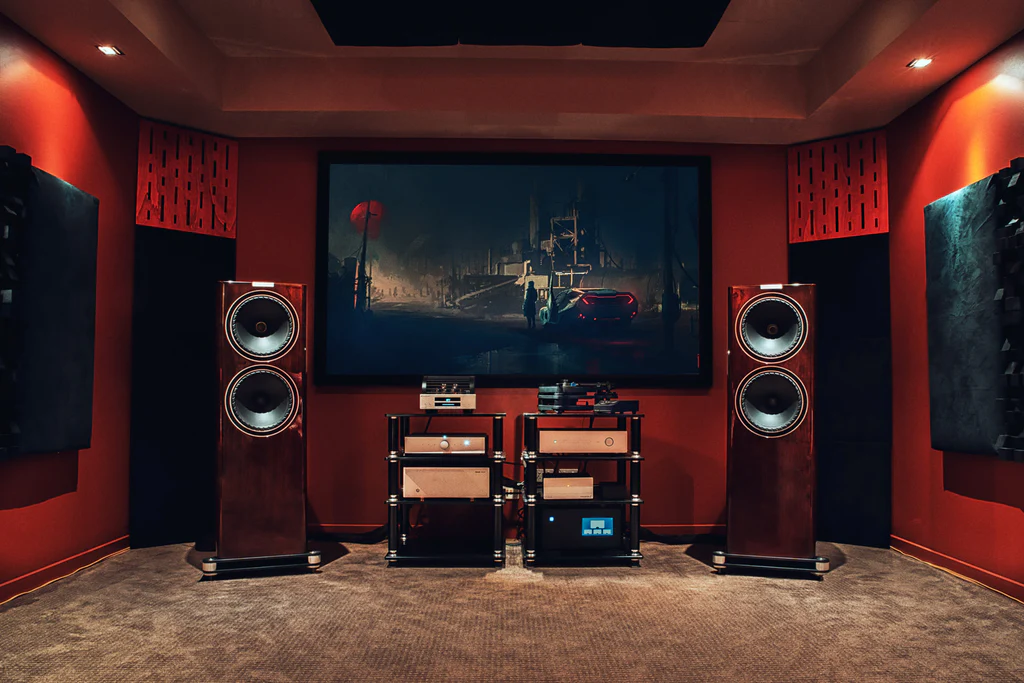
First, there is a room…
Before you do anything else, figure out which room your stereo will go in, measure the space, clap your hands and yell a bit to see whether it’s echoey, and make sure that you have ample space for the stereo components.
Ideally, the room will be slightly rectangular in shape rather than square, it won’t be bathed in all-day sun, and it won’t be all bare concrete and glass. Hopefully, it’s a room that will be your sanctuary, not a lounge/kitchen with cooking fumes wafting over the equipment or kids running through the space and sticking their fingers through your speaker cones. And importantly, there needs to be an electrical outlet (or two) behind the gear.
One end of the room should be available for your stereo set-up, with no obstructions. The other end of the room you’ll have a seating arrangement with which to better hear the system. Work through the basic room issues first so that when you do bring home the gear you’ll know pretty much where to put it.
Next, find a retailer with a fair selection of entry-level hi-fi gear and ask to audition the components together. Look for well-reviewed gear but don’t be put off by seemingly obscure choices, as there are some phenomenal brands out there that haven’t been reviewed in English-speaking countries. Try your favourite music on a number of different brands and configurations. Be a pest, but a nice pest: explain that you’re serious about getting the best out of your modestly priced first system. If the retailer will let you audition the system at home, even better. After you’ve heard a system you like in the shop and loved it, buy it with a money-back guarantee just in case it sounds like shit in your room (but make sure your room sounds okay before you cast judgment on the gear).
Note: Next time we’ll look at a selection of recommended nicely priced entry-level components.
Don’t complicate things by going all new-technology. This isn’t that kind of article (although we will look at streamers and servers and whatnot in another piece later on).
For the purposes of this story, you’re going to choose a pair of loudspeakers, an integrated amp, and either a CD player or a turntable.
What is the most important component in your new system, and what makes the most difference in the sound overall?
This thorny subject is still being argued over in audiophile forums. The truth is that ALL the components are important, but also, that they dance well together. Some components are great individually but just don’t suit certain other components. That’s why you’ve got to taste and try before you buy.
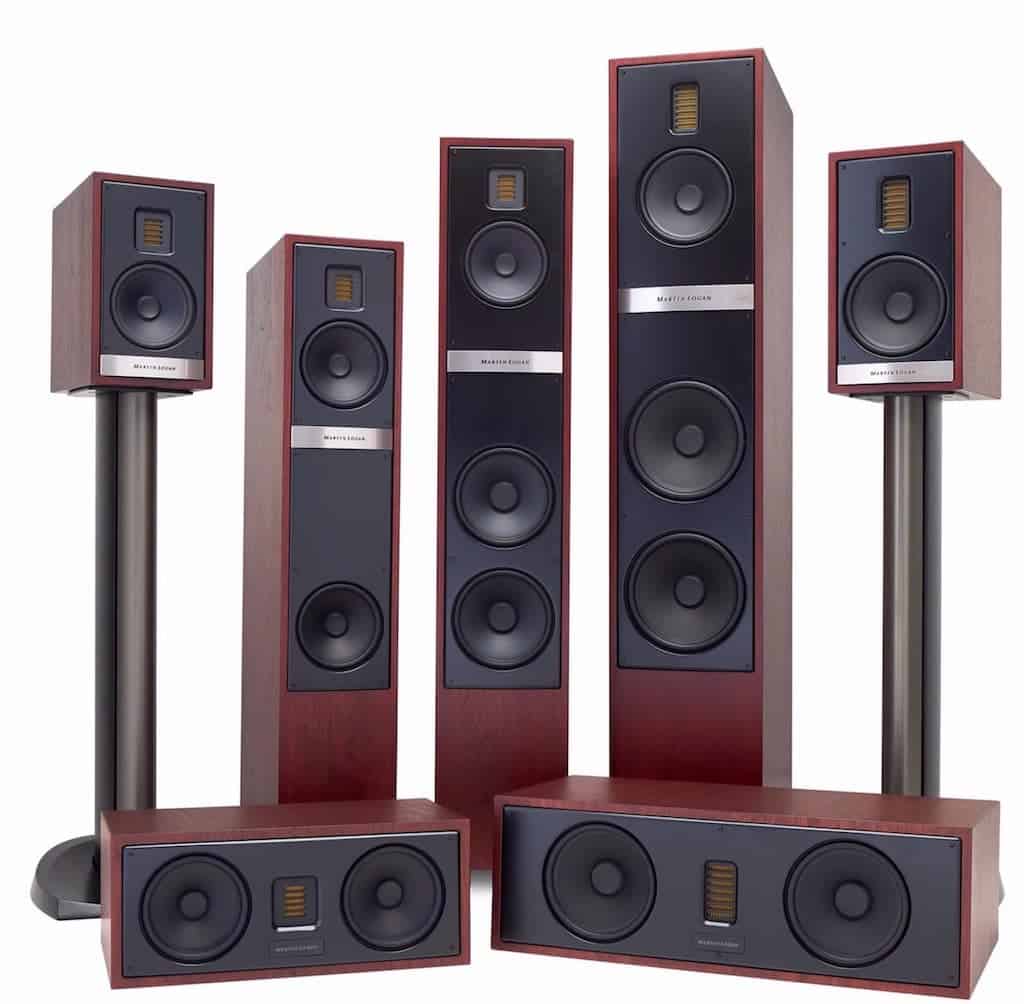
What you need…
Personally, I think the biggest difference by far is made by the speakers. A good pair of speakers will still sound amazing with a very average amp, for instance, but it will sound SO MUCH MORE amazing with a great amp. A great amp pumping through a very average pair of speakers will tend to sound, well… average.
Having measured your room you’ll pass that information on to the expert in your local hi-fi store. They will know if the speaker of your choice is going to overwhelm the room, or if it’s too small to fill the space properly.
Settling on a pair of speakers you REALLY LIKE is key. If you’ve got a small to medium-sized room you’ll probably be looking at a pair of stand mount (aka bookshelf) speakers. These will end up on stands some distance from the back wall and not too close to the sides either, so you’ll need to buy a matching pair of stands too.
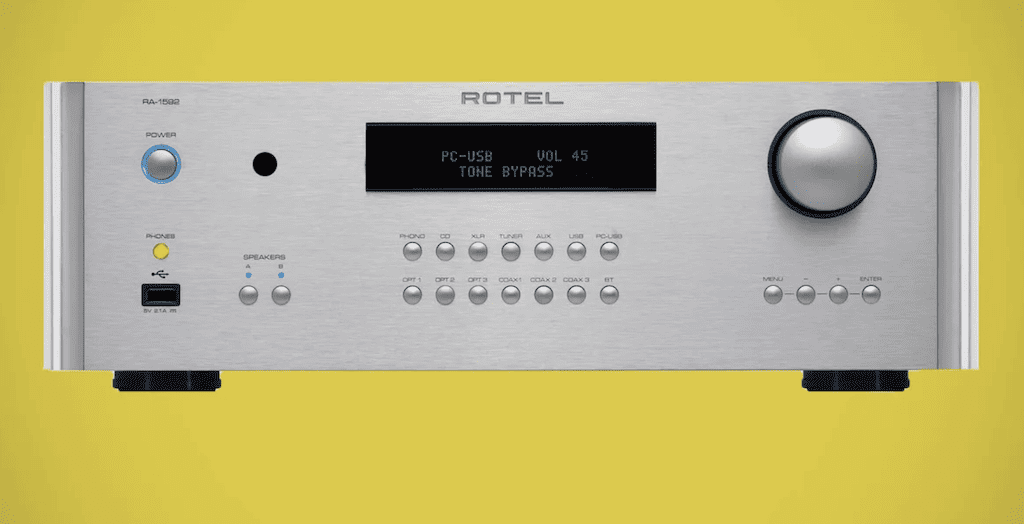
Next, look at amps. Because you’re entry level you won’t be looking at separate pre and power amps; you’ll choose an integrated, which plonks both in the same case. A preamp is the part of the amp that controls everything, and features a volume knob, sometimes bass and treble knobs (although this isn’t common or necessary), a headphone socket, and round the back a multitude of inputs and outputs for cables running from the sources to the amp and then from the amp to the speakers.
It’s tempting to go for powerful amps but most speakers these days are highly efficient, and measuring amps solely in turns of watts doesn’t tell the full story anyway. For this piece let’s assume that you’ve got a small to medium listening room and you’re buying a stand mount speaker and a 50-watt solid state amp, because tube amps tend to be a lot more expensive and fiddly.
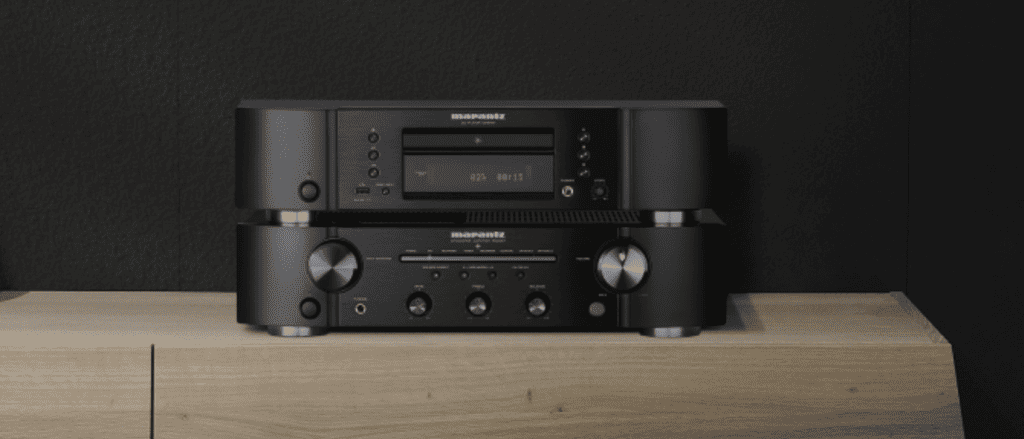
Can you afford more than one source component? If you’ve already got a collection of compact discs, my recommendation would be to get a decent compact disc player. If you’ve instead already got some “vinyl” LPs, or intend to get into vinyl, then choose a turntable. If you’re going down the turntable route, there are a few factors to consider, including whether your choice of amp boasts a phono stage and whether that phono stage can handle the two different types of cartridge, MM (moving magnet) and MC (moving coil). You can buy outboard phono stages, but bear in mind this adds to the expense and will use up one of the inputs on your amp.
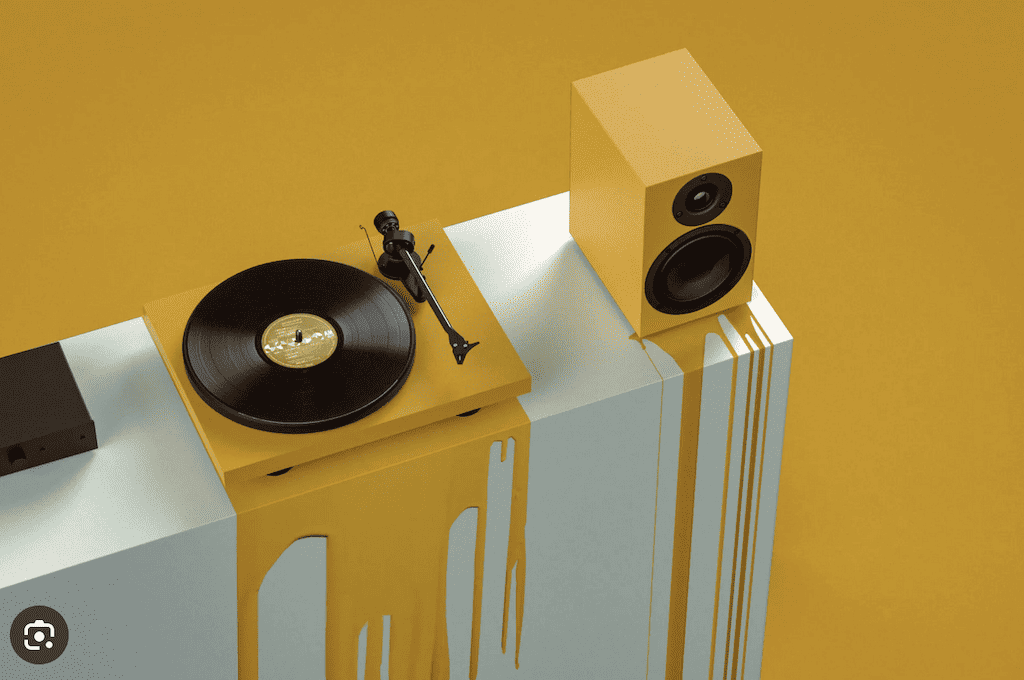
There are a number of entry level turntables on the market, and although it’s harder to get a superb performance out of a cheaper turntable than it is out of a cheaper amp or CD player, as the man says, “you pays your money you makes your choice.”
Extra! Extra! Read all about it!
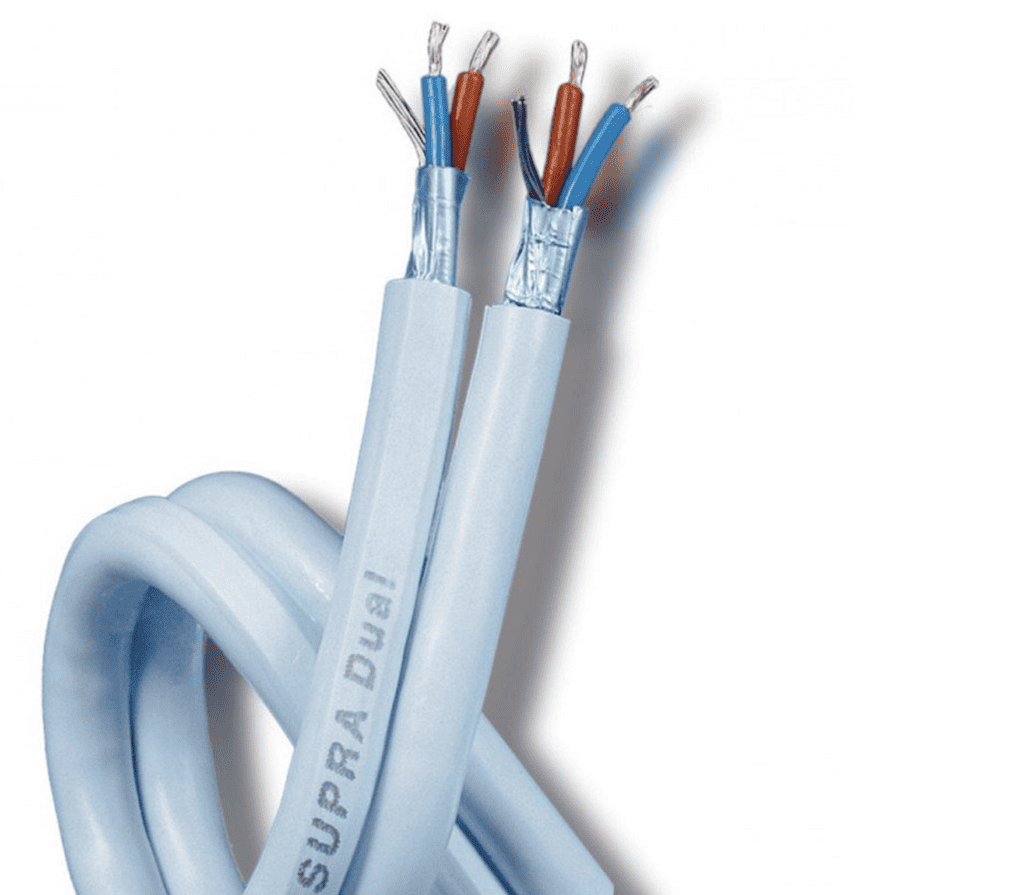
You’ll need a clear idea of what you can afford, and expect to be surprised at those “little things” that add to the overall cost. One of these things is cable. You can get crappy cable from electronics shops but I wouldn’t recommend that. Despite what self-proclaimed experts say online, the quality of your hi-fi cables matters. (I’ll go deeply into that in a subsequent piece). To get acceptable cables hooked into an integrated amp/CD/speaker configuration, you might be looking at a few hundred dollars. One thing that you need to figure out from the get-go is THE LENGTH of cable you need between the components, because the less the cable measures between components the better it will sound.
Another “extra” is what you put the stereo on. Dedicated racks are expensive but can be the best solution. What’s really important is to have a flat surface that can accommodate the components and is far enough from the back wall so that you can get to the cables easily. What’s absolutely essential is to give each piece of componentry its own place to call home. Components should NEVER, EVER-EVER be plonked on top of one another. I mean this! Turntables especially need to be on a completely flat surface and set up right. It helps if your floor isn’t too bouncy. Mine will make the needle jump if I tread too heavily. There are lots of “isolation” products on the market, some of which can cost as much as a small house. The cheaper ones can still be useful because they work as shock absorbers.
New or second-hand?
My recommendations is to generally buy new from a trusted retailer so that you’ve got the benefit of a guarantee and the consumer law, as well as access to after-sale service. Importing cheap stuff from overseas comes with all sorts of risks. Often, gear hasn’t been converted to NZ electrical currents, and if it goes bung, what ya gonna do? Similarly, buying second hand is full of risks for the hi-fi newbie. I’ve got an audiophile friend who also services bung hi-fi gear and his personal philosophy is to get a new system every seven years, because he knows that’s about the time they usually start to need fixing. Second hand bargains can be got, but the fledgling hi-fi buyer needs to be very, very careful.
Watch out for bargains at your local hi-fi store. They often run specials on certain lines of gear and you might be surprised at how much you can save. Don’t forget that retailers generally are very experienced and have the benefit of hearing all the gear available, so it’s worth quizzing them hard about what they’re offering and making sure they understand your needs and your budget.
When you get it home…
So, you’ve got a few boxes and you’re ready to set up your gear and fire it up for a blast of music wonderment. But there’s a bit of work to be done, even with a simple system.
If you need to use a multiplug, make sure you’ve got a good quality one with surge protection. Use online diagrams if necessary to get an idea of the best configuration, especially when it comes to speakers in relation to listening seat.
Depending on whether your speakers are ported or not, the distance from the wall will be different. My non-ported loudspeakers are about two yards from the wall and the benefit of having them further out in the room is a bigger, better, more holographic sound stage. Ported speakers, however, rely to some extent on the bass beaming into the wall so you’ll need to experiment and once again, TRUST YOUR EARS.
The sweet spot is where it’s at
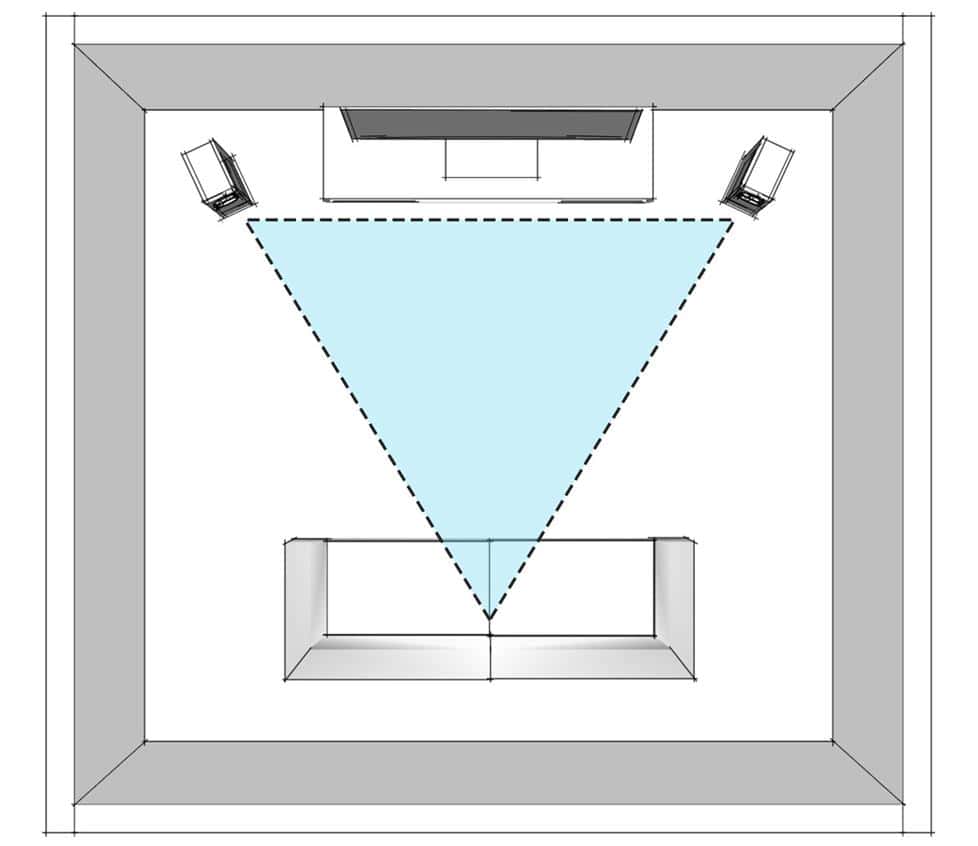 It took me YEARS to understand the importance of this. With two-channel music reproduction, when speakers are placed in the right place and toed-in a little, the listening chair should be a certain distance from the speakers and dead-bang in the centre between them. This is the ONLY part of the room you’ll hear the sounds at their best. Some speakers have a very wide dispersion and the sound will be okay throughout the room, but for properly LISTENING to the music, the legendary “sweet spot” is the way to go.
It took me YEARS to understand the importance of this. With two-channel music reproduction, when speakers are placed in the right place and toed-in a little, the listening chair should be a certain distance from the speakers and dead-bang in the centre between them. This is the ONLY part of the room you’ll hear the sounds at their best. Some speakers have a very wide dispersion and the sound will be okay throughout the room, but for properly LISTENING to the music, the legendary “sweet spot” is the way to go.
This is the point at which both speakers commingle in the listener’s ears and it all sounds “as one”, a perfect, almost 3D image in which “the whole” of the music is “visible” but the stereo imagery is also apparent. There are audiophile test CDs (and probably even YouTube tutorials) on getting this “just right”. At its best, listening in the hot seat (the sweet spot chair) you’ll not only experience a little bit of what music’s like in a live situation, but on different kinds of recorded presentations you’ll be bedazzled with fabulous stereo separation and effects.
This is the immersive and compelling world of hi-fi listening, when music becomes so much more than the background we’re all used to and becomes an EXPERIENCE, sound vibrations that are almost palpable, like you can taste the texture. I’ve had casual music fans who have never heard a “proper” hi-fi system before practically in some kind of a trance hearing their favourite Stevie Ray Vaughn tracks like they’ve never heard them before, and the same thing applies to just about any kind of music. What hi-fi does is it gives the listener a taste of something almost spiritual (can we say “religious”?) How musical vibrations moving through the air can be so full of magic isn’t an easy question to answer, but it’s true that even entry level hi-fi can give the listener a taste of the extraordinary potential of music.
If you’ve chosen a physical sound source like CD or vinyl, there are a few rules, however. If you want to keep the audio integrity of the artefact intact, TREAT IT WITH RESPECT. Keep records and CDs away from sun and dust and never, ever touch the playing surface. I’ve got records I bought in the early 1970s that are still in perfect nick, and the same applies to CDs I bought in the late ‘80s. All it needs is a little care, and avoidance of beer parties!
You’ll also benefit from carefully purchasing only those records and CDs that have been mastered well. There are many examples of poor mastering, both from the ‘80s and early ‘90s when digital mastering was in its infancy and later in the 21st century, when mastering engineers started unnaturally boosting the levels so that their tracks would “stand out” on streaming radio. Those recordings sound horrendous and fatiguing and it doesn’t hurt to hang out on a forum like Steve Hoffman’s, where various punters put new releases and rereleases through testing procedures and generally discuss their fidelity.
Back to the room…
If you plug your system in and crank it up and it doesn’t sound good straight away, don’t panic!
New equipment often takes time to run-in, and often needs a run-in time of a week or two (and sometimes longer) to lose that nasty edge.
And you won’t know exactly what to expect from your room until you’re all set up and playing the music. There are many – usually quite expensive – “room treatments” for acoustic issues. Some rooms have areas where the bass sounds too big or totally dead. Others have a tendency to bring out harshness. The best way for the dedicated newbie is to once again, trust your ears, and then do some online research. It is possible to build your own sound treatments to the exact specifications needed, but doing this is well past my area of expertise. I’m lucky: against all odds, my fairly square room sounds great!
If you’ve got any questions or want to discuss your experiences with knowledgeable hi-fi freaks, then check out Witchdoctor’s own NZ Audiophile Forum on Facebook.
In the meantime, enjoy your hi-fi journey and don’t get too hung-up on the equipment. It’s all about MUSIC, after all.

